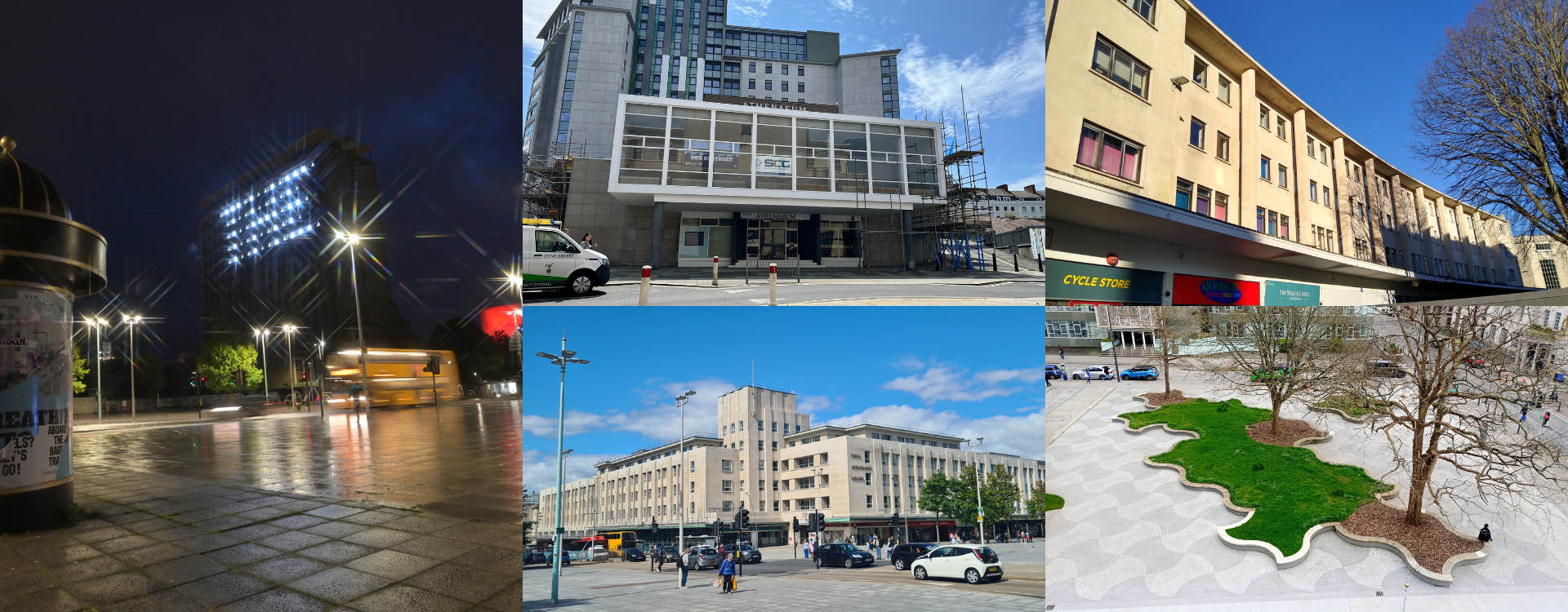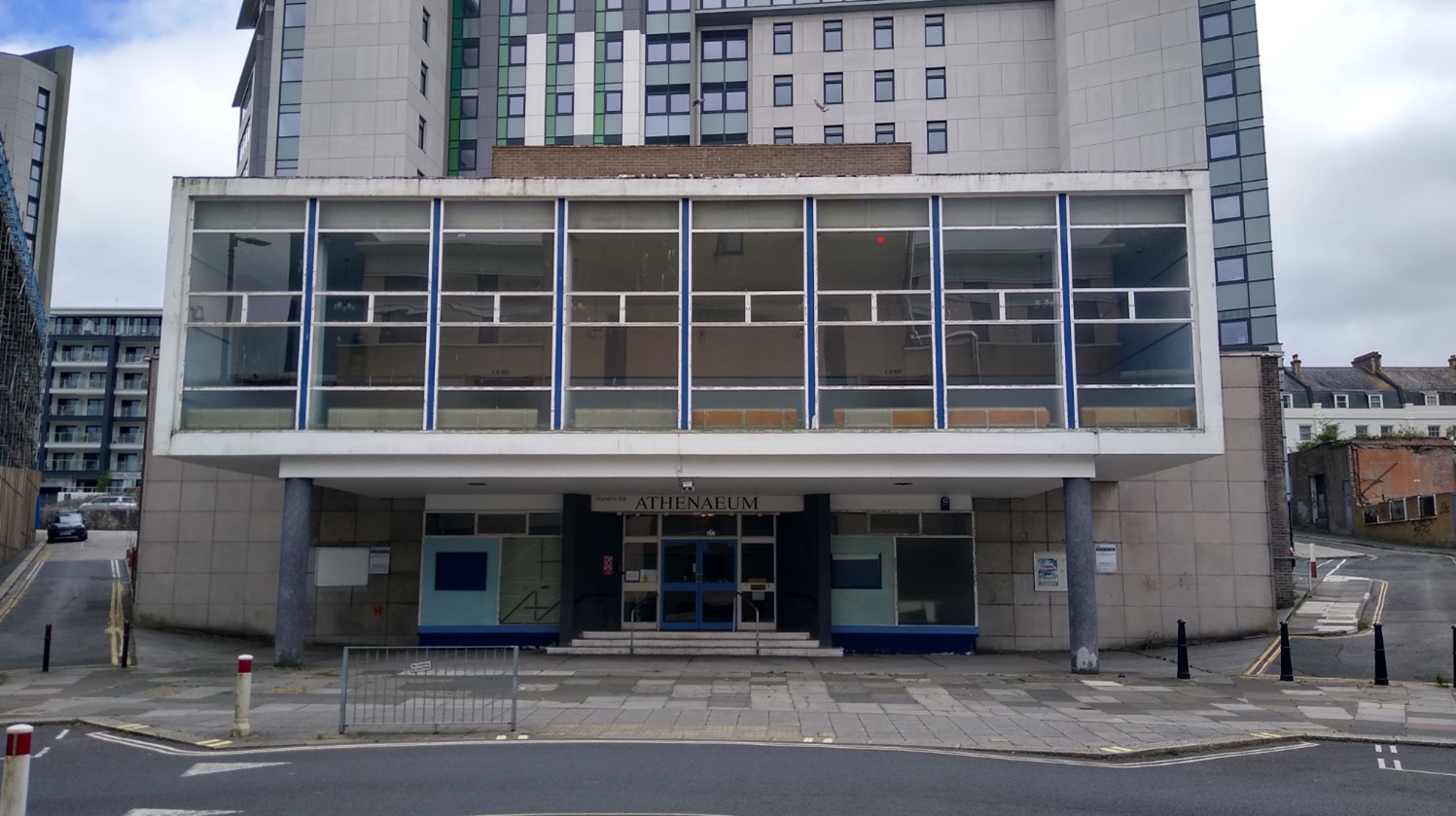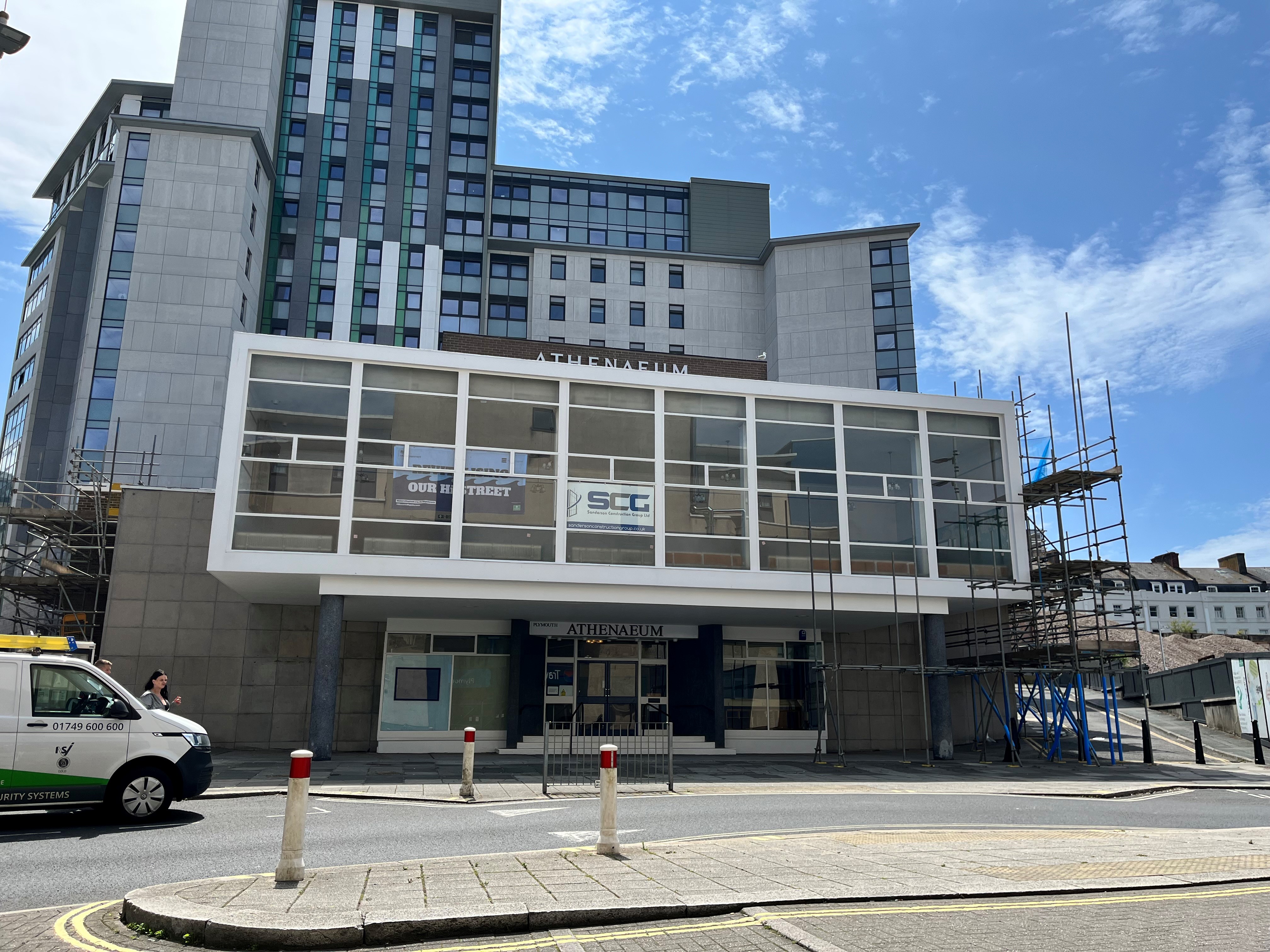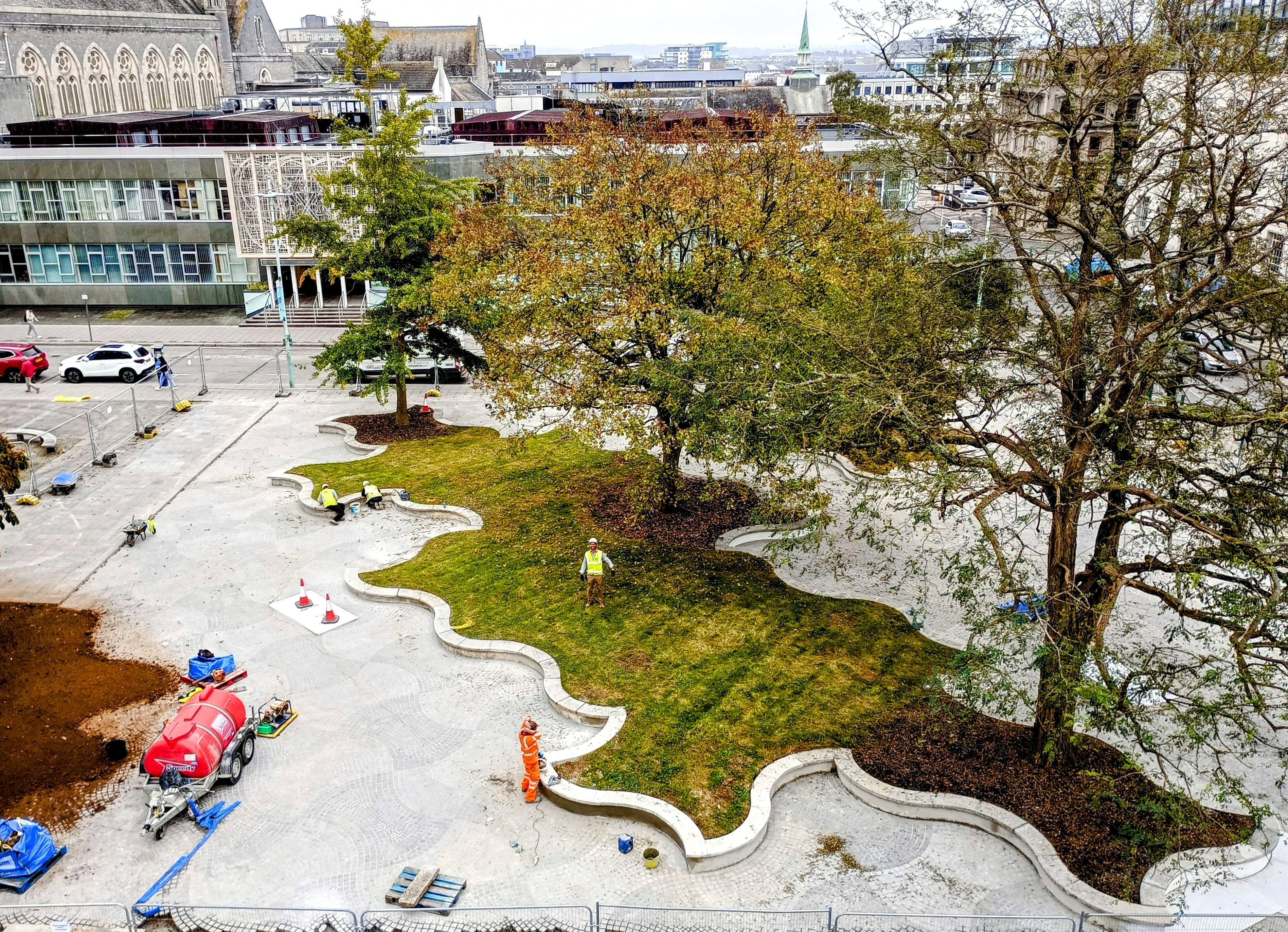The completion of a £2.1m project is a significant milestone in the ongoing overall re-development.
Plymouth is celebrating a scheme designed to make people look again at the city centre’s stunning post-war architecture.
Britain’s Ocean City was one of the country’s most heavily bombed cities during World War Two and its civic heart was virtually razed to the ground during the conflict when, between 6 July 1940 and 30 April 1944, Plymouth experienced 59 separate attacks and the air raid sirens sounded 602 times.
Two shopping centres, two guildhalls, a theatre, six hotels and eight cinemas were destroyed, 26 schools bombed, 41 churches struck, 1,900 public houses destroyed by bombs or fire, 3,754 homes destroyed and 18,389 seriously damaged. The human cost was devastating: 1,174 civilians killed and 4,448 injured.
Instead of rebuilding, in 1943 the council appointed leading town planner, Patrick Abercrombie, to create ‘The Plan for Plymouth’. The plan proposed replacing an overcrowded and congested city centre with a bold, modern style of wide streets, landscaping and greenery – all with a uniformity of architectural style and material. It is the only large-scale example of post-war town planning to be fully implemented in the country.
Some 80 years later and thanks to a four-year High Street Heritage Action Zone (HSHAZ) programme, buildings and spaces in the city centre, known as the Abercrombie Estate, have emerged revitalised and re-energised. Funded by Historic England, the £2.1m project was match-funded by the Transforming Cities Fund, Active Travel England and Plymouth City Council.
The completion of this work is a significant milestone in the overall re-development of the city centre which will continue in further phases.
One of the first projects was producing the City Centre Conservation Area Appraisal and Management Plan which celebrated the UK’s first post-war conservation area, highlighted its international significance in the field of planning and urban design and signalled how this could be upgraded and returned to its former glory.
Simon Hickman from Historic England said:
“Plymouth is the most spectacular example in the country of how opportunities presented by wartime damage were grasped to produce an environment for the modern age: bright, clean, spacious and in tune with the optimism of the post-war years.
“But the city centre is now nearly 75 years old, and inevitably time has taken its toll. We wanted to refresh the fine mid-century architecture and play our part in helping residents and visitors view the city centre with a fresh eye.”
Restoring the Gydnia Fountain at St Andrew’s Cross to working order was the first physical sign of the improvements, creating a gateway to the city centre.
A key project was repairing and cleaning the Portland stone facades of buildings on Royal Parade such as Pearl Assurance House. A grant worth £208,884 was agreed with Historic England and the results are simply stunning. After essential repairs, decades of pollution, algal growth and staining were steam cleaned away to the delight of residents who could see the stonework gleaming. The results encouraged other landlords to do the same. British Land, for instance, took up the offer of match funding and had facades above shops on New George Street and Old Town Street cleaned. A total of 29 facades have been cleaned and repaired, which has led to renewed interest and increase in lettings.
One of the city’s historic institutions, The Athenaeum received a facelift, thanks to a Historic England £86,194 grant. The Council helped the charity to apply for funding to restore the building, which opened in June 1961, on almost the exact location of its pre-Blitz home. Past members of the Atheneum include Charles Darwin and stamp dealer Stanley Gibbons and the modern building has seen the likes of the Beatles perform. It is still an important venue for performing literature and arts.
But the ‘jewel’ of the HASHAZ programme was the restoration of Civic Square – formerly the Grand Square. A Grade II registered park and garden, it was designed by Geoffrey Jellicoe, one of the country’s greatest landscape gardeners of his time. He wanted a space for 'dignity and frivolity', and a ‘civic amenity to be enjoyed by townspeople at all times’. The restoration work entailed reintroducing ‘bow-tie’ paving, the restoration of the ‘reflection pond’, new lighting and new seating.
Work is also progressing on other large-scale public space projects in Old Town Street and New George Street. Contractors have encountered considerable challenges while they dug deep to create a series of rain gardens, voids hastily filled in after the blitz, shop cellars and the odd tram rail have all been uncovered. Another regeneration scheme, Armada Way will hopefully be starting later this year.
HAZ was not just about physical changes but looking to change people’s perceptions. Councillor Mark Lowry, City Centre Champion said:
“We wanted people to look again at the incredible architecture all around them. Rebuilding the city centre to an entirely new street pattern after the Plymouth Blitz was unprecedented in postwar Britain and so much of this architecture is still here.”
The initiative encompassed a cultural programme managed by Plymouth Culture and a Community Engagement Programme managed by The Box which delivered 20 art installations and more than 160 community engagement events.
Listed buildings overlooking Civic Square were lit up with striking installations, from the five-story scrolling of Sir Ben Okri’s poem ‘Love is the highest economy of life’ on the Civic Centre tower to neon messaging of ‘What will you make of it?’ Other highlights are a ‘Selfie Wall’ project – fabulous backdrops for snap-happy folk dotted around the city centre – and an architectural map and trail, showcasing its most important buildings beautifully illustrated.
Hannah Harris, CEO of Plymouth Culture said:
“The HSHAZ programme was a unique opportunity to connect culture, capital and community programmes for real impact. We were able to demonstrate how cultural interventions can contribute to a reimagined, vibrant city centre.
“Over 7,000 people engaged with the culture programme and 88 per cent agreed that cultural activities would attract visits to the city centre and 68% felt that the cultural activity made them more aware of/interested in the unique heritage of the High Street and city centre.”
Steve Hughes, Chief Executive of Plymouth City Centre Company added
“Plymouth City Centre is unique and we were delighted that Historic England felt as strongly as we did that this post-war architecture should be revitalised and celebrated. It’s been a fascinating journey to see some incredible buildings get their moment in the spotlight again.
“It is a tough environment for retailers, but we are seeing footfall in the city centre growing and more interest from businesses looking to open their doors in Plymouth.






